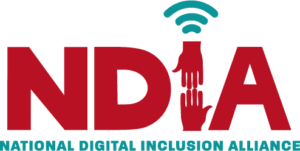Computer Reach: Increasing Tech Access, Affordability, and Digital Literacy
In the 21st century, technological skills and digital literacy aren’t an option, they’re a requirement. Accessing information, paying bills, even submitting job applications, schools and employers are actively transitioning from in-hand paperwork to online documents. Systems are becoming faster and more efficient, eliminating the worries of messy handwriting or lost files. However, with these transitions, something important is being left behind: the people.
Understanding the Divide
As technology becomes increasingly available for purchase at stores and online, accessibility remains a major challenge for the individuals who really need it. With barriers such as cost, broadband access, digital literacy, and access to technology, the opportunity gap between individuals with and individuals without access is growing.
As defined by Merriam-Webster, the term “Digital Divide” refers to “the economic, educational, and social inequalities between those who have computers and online access and those who do not.” Inequality is an accurate word to describe the limitations of the Digital Divide. While some may think of technology as a luxury, tech is becoming increasingly important in completing basic functions in the 21st century. Paying bills, applying for a job, submitting a college application, even completing the 2020 Census. Everything is moving online. If a person doesn’t have access to technology, they miss out on those opportunities.
According to a recent Pew Research Center analysis of survey data, approximately 7% of adults in the United States of America do not use the internet. While there have been many efforts to bridge this divide, internet non-adoption is largely influenced by varying demographic factors, including age, educational attainment, household income, community type, and more. With this, legislators, organizations, and community stakeholders must take action to eliminate barriers to technology and to foster digital inclusion.
Identifying Barriers
When it comes to accessing technology and the internet, many individuals locally, nationally, and internationally are being left behind. In fact, according to the Pew Research Center, 7 percent of adults in the United States of America do not use the internet. That’s nearly 15 million adults in the United States alone. To tackle this issue, several barriers must be addressed. These barriers include, but are not limited to, the following:
- the cost and availability of broadband,
- awareness of broadband options,
- a lack of home or personal devices,
- a lack of basic, advanced, and workforce-specific skills training, and
- a lack of transportation to receive training and services.
Our Approach
Founded by Dave Sevick in 2001, Computer Reach makes technology available to people most in need through refurbished equipment, computer literacy, training, and support. After receiving donated technology, staff and volunteers at the Computer Reach Warehouse begin refurbishing the product. During this process, our hardware team will install LibreOffice, a free office suite of applications that enable users to write documents, create spreadsheets and PowerPoints, and more. Once complete, Computer Reach sells the product at affordable prices to local, national, and international communities. Visit our “Get Computers” page to view what we have available.
Computer Reach also offers digital literacy courses and “camps” to individuals of all ages, including students, adults, and older adults. Participants learn critical digital skills, including basic computer hardware skills, internet, email, and social media safety. To reinforce skill development, our programs feature hands-on sessions with computers, providing students with in-person opportunities to test out new knowledge, practice, and ask questions. Thus far, Computer Reach has provided our services to a variety of organizations and entities, including The Allegheny County Housing Authority, The Education Partnership, and The Trade Institute of Pittsburgh.
As the course nears completion, participants may earn NorthStar certifications for the skills they have learned and receive a laptop at no cost upon graduation. As our work continues, we strive to one day live in a computer literate world where the benefits of technology are shared by all. To learn more about our digital literacy services, NorthStar, and the Digital Divide, visit our “Digital Literacy” page.
More Information
For more information or to volunteer, contact info@computerreach.org or 412-444-8816.



Hello. My name is gerardine, I attend the ccac course but I don’t have a laptop. I need a laptop because my lessons are online and remote and I have children who go to school.
my last laptop is broken, I am unemployed I have no money to buy another one.
Thanks